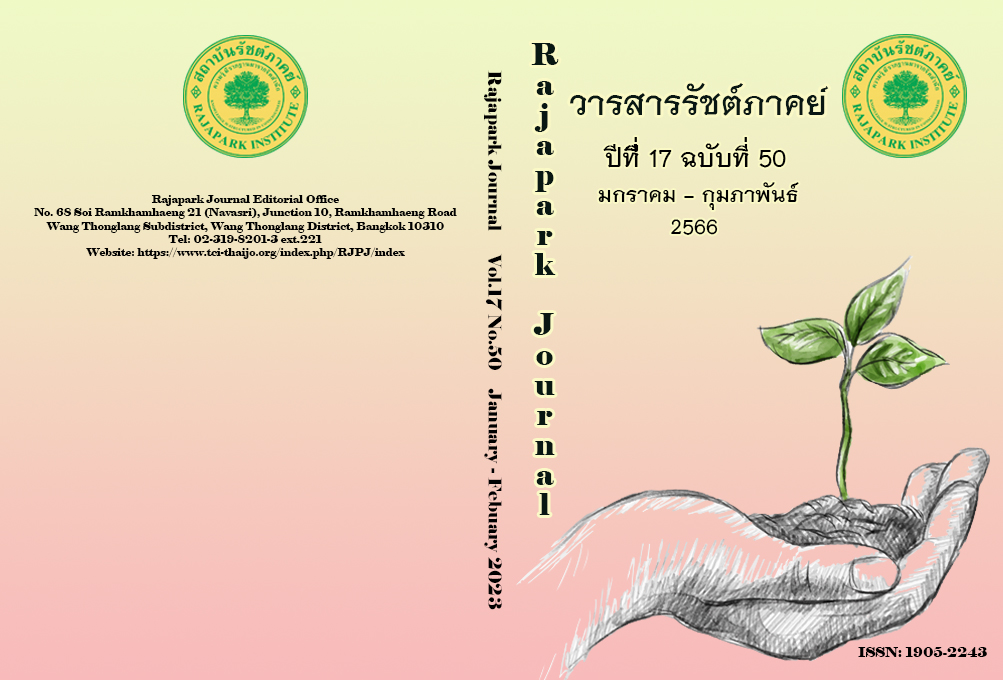Balanced Scorecard Management Strategy of Large Schools under the Office of Pathumthani Primary Educational Service Area
Main Article Content
Abstract
The purpose of this qualitative research was to analyze the external and internal environment and formulate the balanced scorecard management strategy of large schools. Key informants and in the research were administrators and teachers in large schools consisted of 28 persons. Research tools were the workshop record form, external and internal environment analysis form, vision and formulate the balanced scorecard management strategy form. Data collection, self-collection, content analysis, data analysis. The results showed that 1. The analysis of the external and internal environment of large schools as a whole were opportunities and strength, respectively, and internal environments. To determine the direction of the strategy, the results appear to be in the position of a rising star, able to proactively determine, expand and develop 2. Strategies for the balanced scorecard management of large schools have 4 main strategies, 25 sub-strategies. The main strategies were 1) Strategies for building student achievement 2) strategies for developing highly skilled teachers 3) Fundraising strategies and resources for education, and 4) Good management development strategies.
Article Details

This work is licensed under a Creative Commons Attribution-NonCommercial-NoDerivatives 4.0 International License.
Views and opinions appearing in the Journal it is the responsibility of the author of the article, and does not constitute the view and responsibility of the editorial team.
References
Independent Committee for Education Reform (ICER). (2017). Educational a form Country Plan. Independent Committee for Education Reform (ICER).
Kaplan, R.S., & Norton, D.P. (1992). The Balance Scorecard-Measures that Drive Performance. Harvard Business Review, 71-79.
Kongsaeng, A. (2021). Teacher of Bangchoadanusorn School. Interviews. November, 13.
Kountz, H., & Weihrich, H. (1988). Management (9th ed.). McGraw-Hill.
Lomlai, R. (2021). The Development of a Balanced Management Model of Ramkhamhaeng University. Ramkhamhaeng University.
Maesincee, S. (2017, Jan 16). Reparation Thai people 4.0 for the First World. (Video). EDUCA 2016. https://www.facebook.com/educathai/videos/1229557307126092/
Ministerial Regulations Prescribing Criteria and Methods of Decentralization of Administration and Education Management, B.E. 2550. (2007, May 16). The Government Gazette. Vol.124, section 24a., pp.29-36.
National Institute of Educational Testing Service (Public Organization). (2020). The Development of Testing System of Core Competency for Learners at the Primary School to Enhance the Quality of Learner in the 21st Century. http://www.oic.go.th/FILEWEB/CABINFOCENTER6/DRAWER059/GENERAL/DATA0000/00000379.PDF
Sangsiriwejthada, S. (2021). Balanced Scorecard Management Strategies under the Pathumthani Primary Educational Service Area Office 1[Master’s Thesis, Eastern Asia University].
Pathumthani Primary Educational Service Area Office 1, Group Policy and Plan. (2020). Basic Education Development Plan 2020 – 2021 (Reviewed edition 2021). https://plan.ptt1.go.th/
Usaho, K. (2020). Lecture on Setting Visions and Strategies of Educational Institutions at Bangchoadanusorn School. October, 8.
Usaho, K. (2021). Documents for Teaching Educational Strategy Management Course Code 34101201. Educational Administration, Faculty of Graduate Studies, Eastern Asia University.
Usaho, K. (2021a). Workshop on Setting visions and Balancing Strategies of Klong 5 School. November, 13.
Usaho, K. (2021b). Workshop on Strategic Management for Learners Development in the 21st Century according to the Thailand 4.0 concept at Buengkhaoyon (Kongpanuppatam) School. November, 30.
Usaho, K. (2022). Teaching Dements on Policy Management, Educational Strategies, and Educational Quality, Assurance code 2410063. Educational Administration, Faculty of Graduate Studies, Eastern Asia University.


